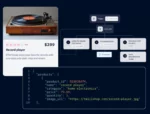Out of the box, the search capabilities of Microsoft Office SharePoint Server (MOSS) 2007 are pretty impressive. It is quick and easy to get running and allows users to quickly find the pieces of content you might be looking for.
SharePoint indexes not only the file names of the content and files, but it is also able to crawl the actual contents of many common document types, including most Microsoft Office documents. Simply installing MOSS and configuring search is enough to elicit wows from many clients. And the reason is that being able to quickly locate content across an organization is one of the quickest ways to see ROI from SharePoint.
For all its power, MOSS search isn’t perfect. One of the more common complaints I often hear is that users want the ability to enter Boolean operators into their searches. If you aren’t familiar with the term, Boolean operators in searching allow users to have much greater control over their search queries. For example, a user could enter the following query if they were trying to track down information about SPTechCon:
(“Awesome” OR “Best”) AND “SharePoint Conference”
Although MOSS has always supported Boolean operators through the API, there was no way to take advantage of these capabilities without custom code or purchasing third-party software.
SharePoint Search in SharePoint 2010 has a long list of great new enhancements that address many of the common issues that users asked about in MOSS. In short, the experience has been improved across the board to provide a more scalable architecture and give users the ability to get to more relevant results faster and more efficiently than ever before.
One of the big improvements is a new query syntax that provides support for Boolean operators. This means that when users are searching, they can enter this syntax straight into any search box to help get more specific and hopefully relevant search results. Here are a few examples of the new query syntax:
Support for Boolean operators for FreeText queries and Property queries:
(“SharePoint Search” OR “Bing”) AND (title:”Keyword syntax” OR title:”Query Syntax”)
Prefix matching support for keywords and properties:
Share* author:john*
Improved operator support for property restrictions to include the following:
=,>,<,<=,>=
What does this mean for you? It means you should be able to find what you are looking for faster and more efficiently, especially in organizations that have a large amount of content to be searched. One other hidden advantage it provides is the ability to create much more powerful advanced searches by manipulating the Query String that is returned to the core result’s Web part. The new query syntax can be used in conjunction with the same technique I mention here.
Search in SharePoint 2010 is one of the areas that have among the most improved over the previous version. The new query syntax is just one of the many improvements that users will see that allow them to make it easier to find what they are looking for. Happy searching!
John Ross is a Senior Consultant and SharePoint Server MVP with SharePoint911. He has over seven years of experience implementing solutions for clients ranging from small businesses to Fortune 500 companies as well as government organizations. John is co-author of the book “MOSS Explained: An Information Workers Deep Dive into Microsoft Office SharePoint Server 2007,” and was a contributing author to “Professional SharePoint 2007 Design.” Visit his blog here.





